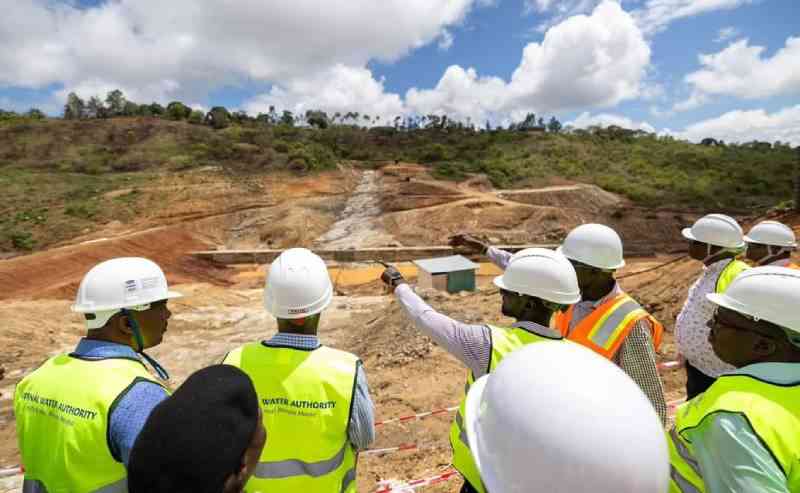Umaa Dam project nears completion after decade-long delays
Eastern
By
David Njaaga
| Nov 21, 2024

Residents of Kitui are set to benefit from reliable water supply after the government reaffirmed its commitment to completing the Umaa Dam project.
The project, which began in 2009, had faced more than a decade of delays due to a dispute between the original contractor and the National Water Authority.
Water Cabinet Secretary Eng. Eric Mugaa said the contract had been terminated following arbitration, with China Jiangxi International now tasked with completing the work at a revised cost of Sh1.9 billion, up from the initial Sh566 million.
Mugaa assured residents that further delays would not occur.
“Continuous assessment and monitoring of the project is paramount to ensure all challenges are ironed out so that the project does not stall again and mistakes made in the past are not repeated,” said Mugaa.
READ MORE
The building collapse that sparked Tanzania's jobs ban
How firm's bid to turn waste into cash is paying off
Singapore's renewed bid to tap into growing Kenyan market
Safaricom's Safire Connect campaign first season ends
Cabinet gives nod for 80MW geothermal power plant
How Kenyan banks are losing billions to fraud
Why US ballooning public debt is a key concern for Kenya
Nairobi Expressway contractor to shoulder Sh6.9b tax bill
KEBS on the spot over plans to engage firm to validate vehicle importation papers
Call for business leaders to adopt AI for increased productivity
The project is 73.4 per cent complete, with the coffer dam finished and grouting work ongoing. Once completed, the dam will store 1.2 billion litres of water and provide 2.65 million litres of water daily to 75,000 residents.
Mugaa said that with funding in place, any further delays would only increase costs.
The dam is expected to be completed by 2026.
Kitui Governor Dr. Julius Malombe said the dam would create business opportunities and improve residents’ livelihoods.
Both officials stressed the need for continued collaboration between national and county governments to improve water access and reduce non-revenue water losses.

